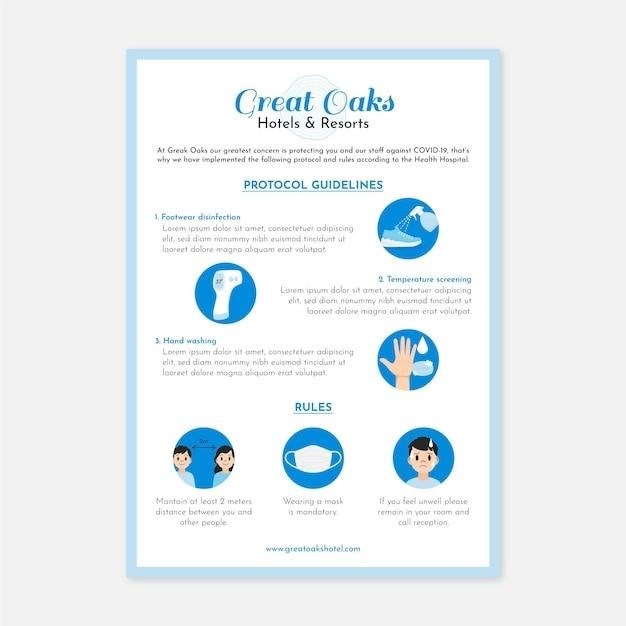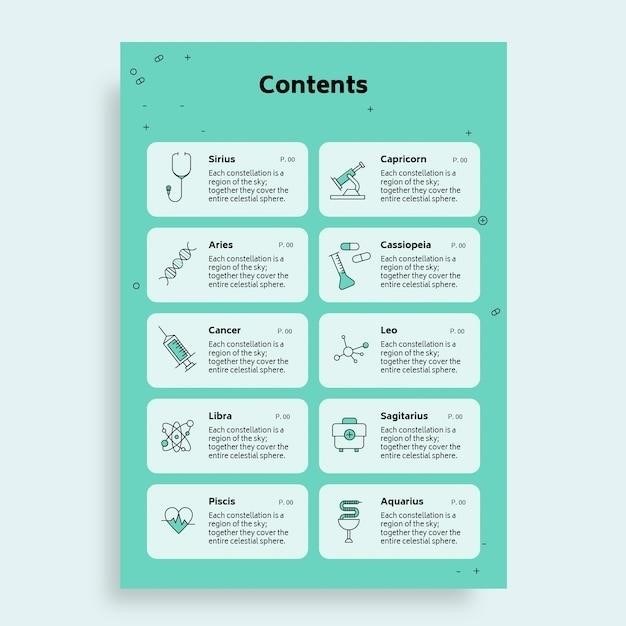Medical Spanish Cheat Sheet PDF⁚ A Guide for Healthcare Professionals
Navigating the healthcare system with Spanish-speaking patients can be challenging without the right vocabulary. Misunderstandings can lead to misdiagnosis, treatment errors, and a breakdown in patient trust. This comprehensive guide will equip you with the essential medical Spanish phrases and terms needed to effectively communicate with your patients.
Introduction
In today’s increasingly diverse healthcare landscape, the ability to communicate effectively with patients from various linguistic backgrounds is paramount. For healthcare professionals, mastering medical Spanish is a valuable skill that can bridge the communication gap and enhance patient care. A medical Spanish cheat sheet PDF serves as a valuable tool for healthcare providers, offering a concise and readily accessible resource for essential medical terms, phrases, and questions. This guide provides a comprehensive overview of the benefits of learning medical Spanish, how to effectively utilize a cheat sheet, and where to find downloadable resources. By equipping healthcare professionals with the necessary vocabulary and tools, we can foster better patient-provider relationships and ensure that communication does not become a barrier to quality healthcare.
Essential Phrases for Healthcare Professionals
A well-constructed medical Spanish cheat sheet PDF should include a variety of essential phrases for healthcare professionals to use in different clinical settings. These phrases can be categorized based on common interactions, such as greetings and introductions, patient history taking, physical examination, and explanations of diagnoses and treatment plans. For example, common greetings include “Buenos días” (Good morning), “Buenas tardes” (Good afternoon), and “Buenas noches” (Good evening). When taking a patient’s history, healthcare providers might ask questions like “¿Cómo se siente?” (How are you feeling?), “¿Qué le duele?” (What hurts?), and “¿Tiene alguna alergia?” (Do you have any allergies?). During a physical examination, phrases like “Respira profundo” (Take a deep breath), “Abra la boca” (Open your mouth), and “Muévame el brazo” (Move your arm) are essential.
Furthermore, the cheat sheet should include phrases for explaining diagnoses and treatment plans, such as “Usted tiene una infección en la garganta” (You have a throat infection) and “Le voy a recetar un antibiótico” (I’m going to prescribe an antibiotic). By incorporating these essential phrases, healthcare professionals can confidently navigate common clinical encounters and build trust with their Spanish-speaking patients.
Common Medical Terms in Spanish
A comprehensive medical Spanish cheat sheet PDF should include a substantial list of common medical terms in Spanish, covering various medical specialties and body systems. This section should focus on core vocabulary related to symptoms, diagnoses, treatments, and anatomical structures. For instance, it should include common symptoms like “dolor de cabeza” (headache), “fiebre” (fever), “tos” (cough), and “náuseas” (nausea).
Furthermore, it should include terms related to diagnoses such as “infección” (infection), “asma” (asthma), “diabetes” (diabetes), and “cáncer” (cancer). The cheat sheet should also include basic medical treatments like “medicamentos” (medications), “cirugía” (surgery), and “terapia física” (physical therapy).
Additionally, it should include common anatomical terms like “corazón” (heart), “pulmones” (lungs), “estómago” (stomach), “hígado” (liver), and “riñones” (kidneys). By including these common medical terms, healthcare professionals can quickly access essential vocabulary and improve their communication with Spanish-speaking patients.
Medical Spanish Cheat Sheet PDF⁚ Downloadable Resources
The internet is a vast repository of downloadable resources for healthcare professionals looking to enhance their medical Spanish skills. These resources range from comprehensive cheat sheets to specialized vocabulary lists, all designed to facilitate effective communication with Spanish-speaking patients. Many websites offer free downloadable PDF cheat sheets covering a range of medical topics, from common symptoms and diagnoses to specific procedures and treatments.
These resources often include essential phrases, medical terminology, and pronunciation guides, making them valuable tools for both beginners and those seeking to expand their medical Spanish vocabulary. Some websites even offer downloadable audio recordings of these phrases, allowing users to practice pronunciation and improve their comprehension. Additionally, many online platforms provide interactive exercises and quizzes to reinforce learned vocabulary and test comprehension.
By leveraging these downloadable resources, healthcare professionals can acquire the necessary medical Spanish vocabulary and build confidence in their ability to communicate effectively with diverse patient populations. These resources provide a convenient and accessible way to enhance language skills and improve the quality of care provided to Spanish-speaking patients.
Medical Spanish for Healthcare Providers
Learning medical Spanish is essential for healthcare providers who serve diverse communities. It allows for more effective communication, improves patient trust, and ensures a higher quality of care. Proficiency in medical Spanish enables healthcare providers to accurately understand patient concerns, conduct thorough examinations, and explain treatment plans clearly. This enhances patient comprehension and satisfaction, leading to better adherence to treatment recommendations.
Beyond direct patient care, medical Spanish skills are valuable in various healthcare settings. It facilitates communication with Spanish-speaking colleagues, improves collaboration with interpreters, and enhances understanding of medical records and documentation. In administrative roles, medical Spanish enables efficient communication with Spanish-speaking patients, families, and community members.
By investing in learning medical Spanish, healthcare providers demonstrate commitment to culturally sensitive care and build stronger relationships with their patients. This ultimately contributes to a more inclusive and equitable healthcare system, benefiting both patients and providers.
Benefits of Learning Medical Spanish
Learning medical Spanish offers a multitude of benefits for healthcare professionals, enhancing both patient care and professional development. The ability to communicate effectively with Spanish-speaking patients fosters trust and improves patient satisfaction. Patients feel more comfortable and confident when they can understand their healthcare providers, leading to better adherence to treatment plans and improved health outcomes.
Beyond direct patient care, medical Spanish enhances professional opportunities. It expands career prospects, particularly in areas with large Hispanic populations. Healthcare providers with medical Spanish skills are highly sought after, as they can bridge cultural gaps and ensure equitable access to healthcare for diverse communities. Furthermore, learning medical Spanish broadens cultural understanding and sensitivity, enriching professional interactions and promoting a more inclusive healthcare environment.
Investing in medical Spanish proficiency can lead to greater job satisfaction, as healthcare providers feel empowered to provide comprehensive and culturally appropriate care. It fosters a sense of accomplishment and contributes to a more rewarding and fulfilling career path.

How to Use a Medical Spanish Cheat Sheet
A medical Spanish cheat sheet is a valuable tool for healthcare providers, but its effectiveness depends on proper utilization. Start by familiarizing yourself with the most commonly used phrases and terms. Practice pronunciation and ensure you understand the meaning of each word or phrase. Don’t be afraid to use the cheat sheet frequently, especially during initial interactions with Spanish-speaking patients.
When engaging with patients, speak slowly and clearly, using simple language and avoiding jargon. Encourage patients to ask questions and clarify any misunderstandings. Remember that building rapport and establishing trust is crucial for effective communication. Active listening is essential – pay attention to non-verbal cues and ensure you fully comprehend the patient’s concerns.
Don’t hesitate to seek assistance from interpreters or bilingual colleagues when needed, especially for complex medical discussions or emergencies. Embrace the learning process and continuously expand your medical Spanish vocabulary through practice and exposure to diverse cultural contexts. With dedication and practice, you can confidently communicate with Spanish-speaking patients and provide culturally sensitive healthcare.
Medical Spanish Cheat Sheet Examples
Medical Spanish cheat sheets can be tailored to specific medical specialties or patient needs. For example, a cheat sheet for emergency medicine might focus on phrases related to trauma, pain assessment, and vital signs, while a cheat sheet for pediatrics might emphasize terms related to childhood illnesses, developmental milestones, and common childhood injuries.
Consider a cheat sheet for a patient with a sore throat. It might include basic greetings, questions about symptoms (e.g., “Does your throat hurt?”), and phrases for explaining treatment options (e.g., “I recommend you take some cough drops”). A cheat sheet for a patient with a broken leg could include questions about pain, mobility, and the patient’s understanding of the treatment plan (e.g., “Can you walk?” or “Do you have any questions about the cast?”).
The key is to create a cheat sheet that is concise, easy to use, and relevant to the specific medical situation. Remember that a cheat sheet is a tool to facilitate communication, not a substitute for proper language learning and cultural sensitivity. With practice and a willingness to learn, you can effectively communicate with Spanish-speaking patients and provide culturally competent care.
Additional Resources for Medical Spanish Learners
Beyond cheat sheets, a wealth of resources can help you improve your medical Spanish proficiency. Online platforms like LinguaLinkup offer comprehensive lists of Spanish medical terms, covering a broad range of specialties and scenarios. These resources can be invaluable for expanding your vocabulary and understanding the nuances of medical terminology in Spanish.

Consider exploring online courses or workshops specifically designed for medical professionals. These programs often combine interactive learning exercises, real-life scenarios, and cultural insights to enhance your communication skills. Many universities and medical schools offer continuing education programs in medical Spanish, providing structured learning opportunities with certified instructors.
Don’t underestimate the power of immersion. If you have the opportunity to interact with Spanish-speaking patients or colleagues in a healthcare setting, seize it. Even brief conversations can be valuable learning experiences. Remember, the key to mastering any language is consistent practice and exposure.
In an increasingly diverse healthcare landscape, mastering medical Spanish is a valuable asset for any healthcare professional. A medical Spanish cheat sheet PDF serves as a readily accessible tool, providing essential phrases and terms to bridge the communication gap with Spanish-speaking patients. These resources can enhance patient care, build trust, and ensure a more inclusive and effective healthcare experience for all.
Remember, a cheat sheet is just the starting point. Continuous learning, engagement with Spanish-speaking communities, and a commitment to improving your language skills are essential for long-term success. By embracing the opportunity to communicate effectively with Spanish-speaking patients, you can foster a more compassionate and culturally sensitive healthcare environment.
So, equip yourself with the tools you need, embrace the challenge of learning medical Spanish, and unlock the potential for meaningful connections with your patients. The journey of language learning is an ongoing process, and with dedication and practice, you can become a more confident and culturally competent healthcare provider.
